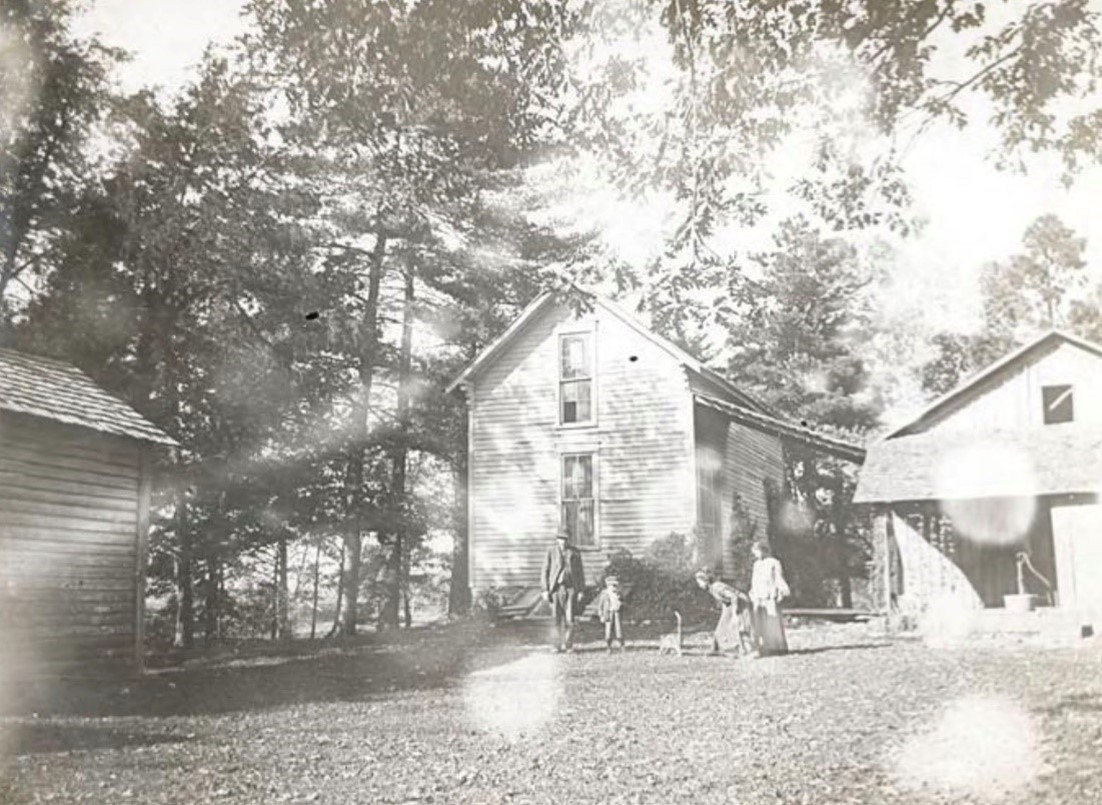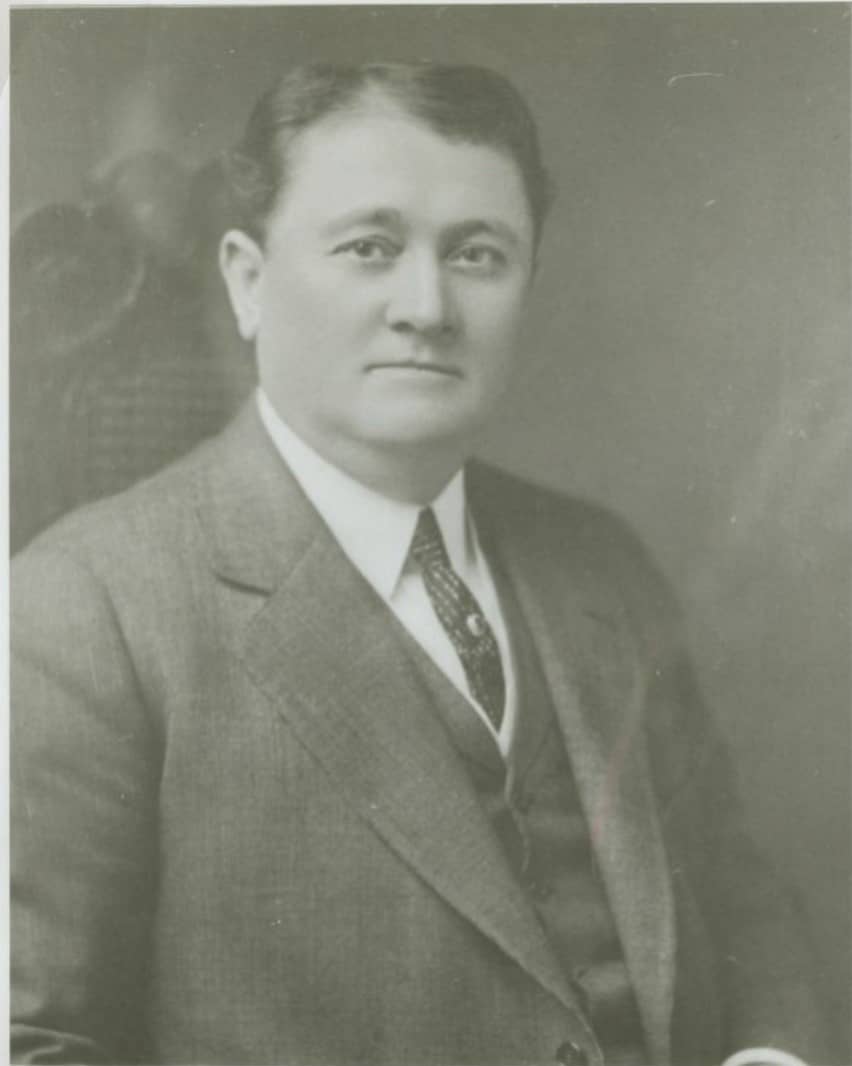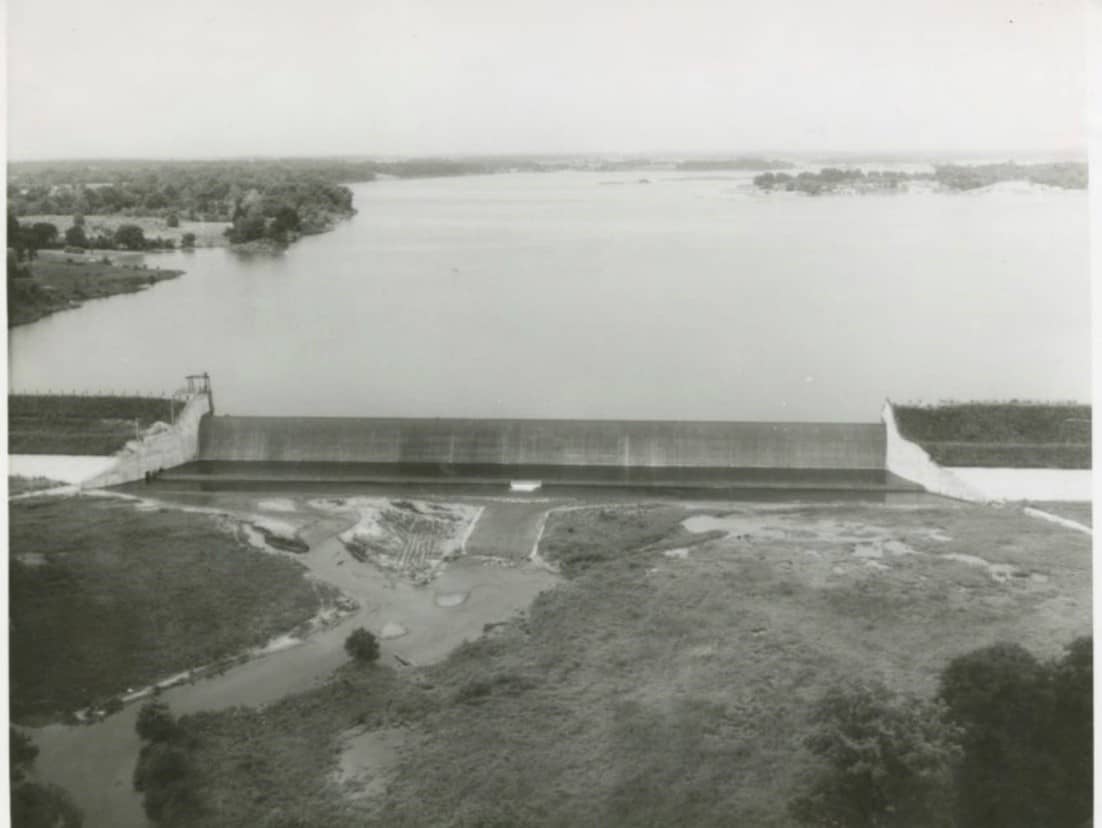Geist Reservoir has become a community staple in Fishers and the surrounding areas. Many people recognize Geist as a symbol of our city’s growth throughout the last few decades. What most people don’t know is why Geist is also a symbol of our history.
Years before Fishers had even become platted as Fishers Switch, a small town lay where the reservoir now stands. Established in 1834 by German settlers from the nearby Oaklandon area, Germantown was a small collection of homes. The town had a general store, grist mill, shoemaker, and not much else.

Photo Credit: Conner Prairie Rural History Project

Photo Credit: Indiana Historical Society
It was situated along the north side of Fall Creek, which provided the residents with power for the mill, fishing, and transportation. This was a similar setup to many other towns in the area. Tiny hamlets dotted the Fall Creek banks throughout the countryside of central Indiana. Germantown was situated between Fall Creek and Lawrence Townships. Today, this is the line between Hamilton and Marion counties.
The town thrived quietly for decades until massive growth in the Indianapolis area created a need for a new water source. As of the 1920s, Indianapolis had no above-ground reservoirs and primarily drew its water from the White River. Several reservoirs had been suggested in the previous years, but no ideas had taken off.
In 1913, the Indianapolis Water Company (IWC) came under the new management of Clarence H. Geist. Born in LaPorte, Indiana, to a farmer, Geist quickly began to aim higher. After trying his hand at cattle ranching and real estate, Geist moved into utilities. One of his biggest successes was the purchase and transformation of the Cloister Inn into the Boca Raton Club in Florida. At the time, the club was one of the most luxurious and private in the world.

Clarence H. Geist
Photo Credit: Indiana Historical Society
Around 1928, Geist directed the vice president of the IWC, Howard Morse, to begin purchasing land surrounding Germantown. Within a few years, most of the land was owned by the IWC. They began initial topographical analysis and test borings from 1931 to 1932 while continuing to purchase any remaining land. When the Great Depression hit, construction of the reservoir and dam were delayed. Geist died in 1938, unable to see his plan come to fruition.

1938 plat map of Lawrence Township showing the land purchased by IWC
Photo Credit: Map Collection, Indiana Division, Indiana State Library
On April 19, 1941, the Indianapolis Public Service Commission granted construction authorization; by May 26, 1941, initial work began at the site. Nearly 1,800 acres of land needed to be cleared for the reservoir. While some of this land was wooded, most of it was farmland of previous Germantown residents. On August 6, 1942, Fall Creek was redirected into outlet piping in the dam. By March 17, 1943, Geist Reservoir was filled to capacity and officially named for the former IWC president.
For years, the surrounding area was left largely untouched. Fishing was allowed, and a few picnic tables were provided, but boating was banned until 1953. After years of political back and forth from all sides of the matter, in 1978, the Metropolitan Development Commission approved a request from the Shorewood Corporation for development. The approval allowed Shorewood to rezone 280 acres surrounding the reservoir for 500 homes. By the mid-1980s, much of Geist’s shore had been developed, and a building boom commenced. You may have heard the rumors of being able to see remnants of the town, specifically a church steeple when the reservoir is low, but there is no proof that any buildings remain.

Dam construction
Photo Credit: Indiana Historical Society

Geist Reservoir Dam soon after completion
Photo Credit: Indiana Historical Society
Sources
- https://www.onlyinyourstate.com/indiana/germantown-in/
- https://www.class900indy.com/post/born-of-a-need-the-history-of-geist-reservoir-part-1
- https://www.indystar.com/story/news/history/retroindy/2019/06/20/who-clarence-geist-and-why-did-they-name-reservoir-after-him-geist-reservoir-boca-raton/1491784001/
- http://oaklandon.deburger.com/stories/History_of_Geist_Reservoir_and_Germantown.pdf
- https://www.class900indy.com/post/shorewood-and-highland-the-history-of-geist-reservoir-part-ii


